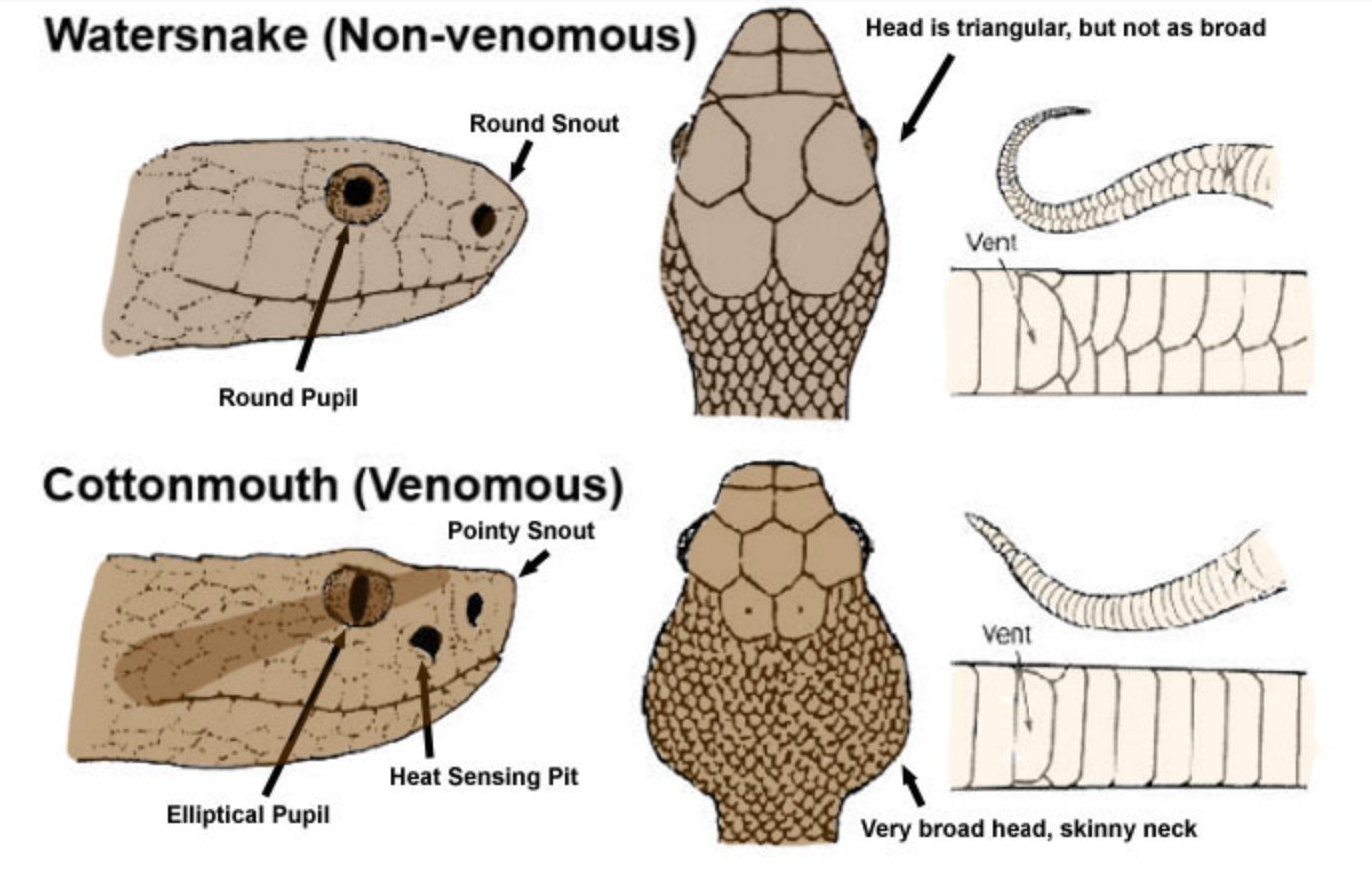How to Treat a Snake Bite

You’re in the middle of the woods and you are bitten by a snake. What do you do?
by Hannah Desmond
While the chances of getting bit by a snake are rare, it’s always better to be prepared. It's important to know how to identify a venomous snake and what to do if you're bit.

IDENTIFYING VENOMOUS SNAKES
Non-venomous snakes have smaller heads, with thin jaws. A venomous snake’s jaws will be noticeably larger (because that is where they store their venom). I'm hoping you won't be close enough to see the venomous snake's eye-slits or heat sensing pit but those features also indicate that this snake is dangerous.
Colors and patterns can also indicate snake species, however they are often unreliable since each snake can vary in color depending on age and species. Also, there are a variety of snakes that mimic the markings of a venomous snake as a form of protection. When it comes down to it, if you're in the US, apart from the coral snake, most of the poisonous snakes you’ll find are pit vipers including: cottonmouth, copperhead, and other rattlesnake species. If the snake is thin, chances are it's not venomous.
If you see a snake in the water, take note of how it swims. Harmless water snakes swim with just the head above the water. Venomous cottonmouth swims with the its entire body floating above the water.
AVOIDING SNAKES
Be mindful where you place your hands and feet. A good rule of thumb while in nature is touch only yourself. Don’t go sticking your arm into unknown crevices or rock formations. While hiking, stay on-trail and scan the ground in front of you and the brush next to the trail before each step. If you have a dog in tow, keep them on leash and close by during peak snake season. Don’t attempt to handle or capture snakes. If you come across a snake, slowly back away from it, and don't attempt to touch it. Most snake species are quite timid and will only strike if they feel threatened.
WHAT TO DO WHEN BIT
In most instances, it will be obvious when you’ve been bitten by a snake. Bite marks may not be as noticeable as you may think, depending on the snake, and it may take awhile for the wound to actually start hurting. Other things to watch out for are abnormal blood clotting and bleeding, low blood pressure, nausea, blurred vision, difficult breathing, increased sweat, and weakness or numbness.
- Stay calm. Regardless if the snake is venomous or not, it is important to stay calm. Focus and slow your breathing. Breath in to the count of three, hold for three seconds, and then breathe out for three. The calmer you are, the better you'll handle the crisis and the slower your heart will circulate the venom.
- Call emergency services immediately.
- Remove any jewelry, watches, or anything that could potentially restrict blood flow if swelling occurs.
- Keep the wound beneath the heart. This is to slow the spreading of the venom through your bloodstream.
- If possible, roll over onto your side and relax. Excessive motion will cause the venom to spread faster.
- Wash the bite and the area around it with water to avoid further infection.
- Cover the bite with a clean, dry bandage. If you have no bandages on hand, you can use a clean piece of cloth, or tissue.
- Immobilize the entire limb (i.e. use a sling for a bite in the hand).
- The best most effective and critical treatment for a venomous snakebite is accessing the antivenom. If got a good look at the snake in question, memorize the colors and markings, as well as its size and shape. This will better help your doctor determine which antivenom is the best for you. Don't chase the snake for an IG capture.
WHAT NOT TO DO
DO NOT try to pick up or kill the snake. One bite is bad enough, you don’t need more. Also, dead snakes can still administer venom.
DO NOT administer a tourniquet. While this may stop the spreading of the venom to other parts of the body, it will concentrate the venom near the bite. This will cause the venom to start rapidly destroying blood cells and skin tissue.
DO NOT attempt to cut or suck the venom from the bite.
DO NOT drink alcohol after being bitten. It is a common conception that drinking alcohol will slow your heart rate, and therefore slow the spread of venom. In reality, alcohol causes vasodilation, or the expansion of your blood vessels which results in an increase in your heart rate, helping the venom spread faster.